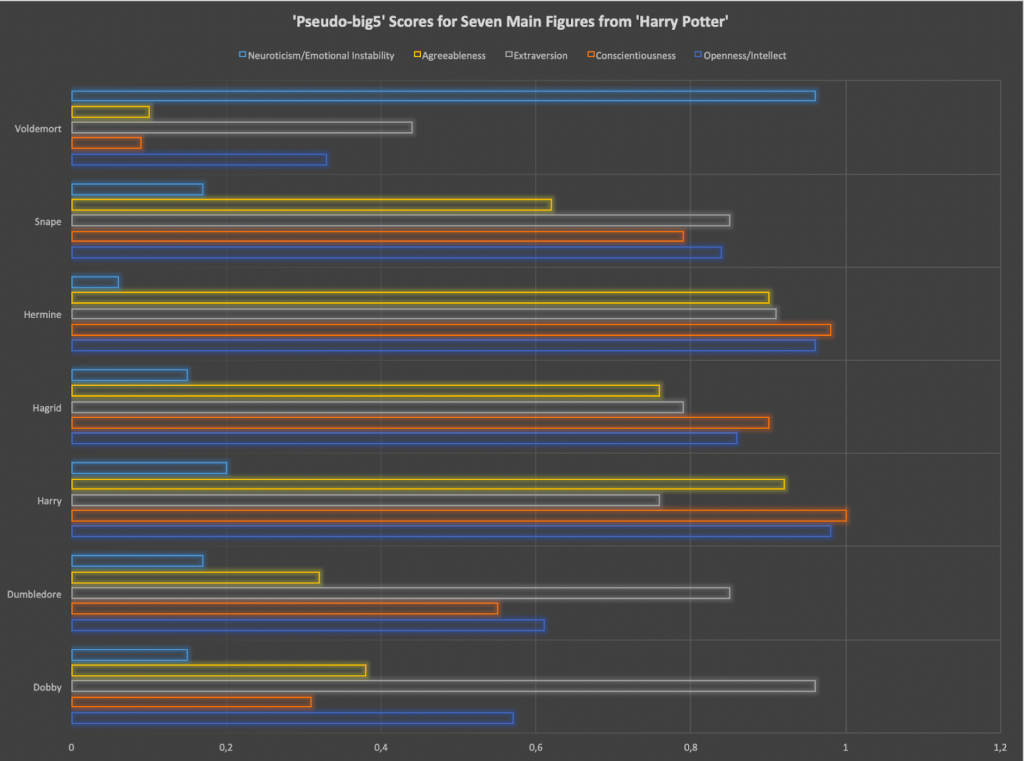
The spider graph in the top panel shows scores on six representative labels for the ‘Agreeableness’ dimension (https://en.wikipedia.org/wiki/Agreeableness) of the so-called ‚big5‘ personality traits (https://en.wikipedia.org/wiki/Big_Five_personality_traits; see also e.g., Costa & McCrae, 1988) for two main characters from Harry Potter (‚Harry‘ and ‚Voldemort‘).
The labels ‚affectionate’, ‚caring’ and ‚friendly’ hypothetically represent the positive pole of the dimension, the other three the negative one. The scores are based on semantic associations between the character names and a number of adjective pairs that loosely represent the so-called ‚big5‘ personality traits (Jacobs, 2018).

The bar chart above shows the Figure Personality Profile in form of the ‚pseudo-big5‘ scores on all five dimensions for seven main characters from Harry Potter. It can be seen that ‚Harry‘ is the top scorer on the Openness (to experience), Conscientiousness and Agreeableness dimensions, while ‘Voldemort’ takes the lead on the Neuroticism dimension. Interestingly, ‘Dobby’ is the winner on the Extraversion dimension.
Together with the Emotional Figure Profile from Example IV the present Figure Personality Profile can serve to compute estimates of figure complexity or Hybrid Hero Potential: from Homer’s Iliad to Gilligan’s Breaking Bad fiction protagonists have been depicted with conflicting features or traits to make them more interesting/attractive to readers, listeners or viewers.
Costa, P.T., Jr., & McCrae, R. R. (1988). From catalog to classification: Murray’s needs and the five-factor model. Journal of Personality and Social Psychology, 55, 258-265.
Jacobs AM (2019). Sentiment Analysis for Words and Fiction Characters from the Perspective of Computational (Neuro-)Poetics. ms in review.